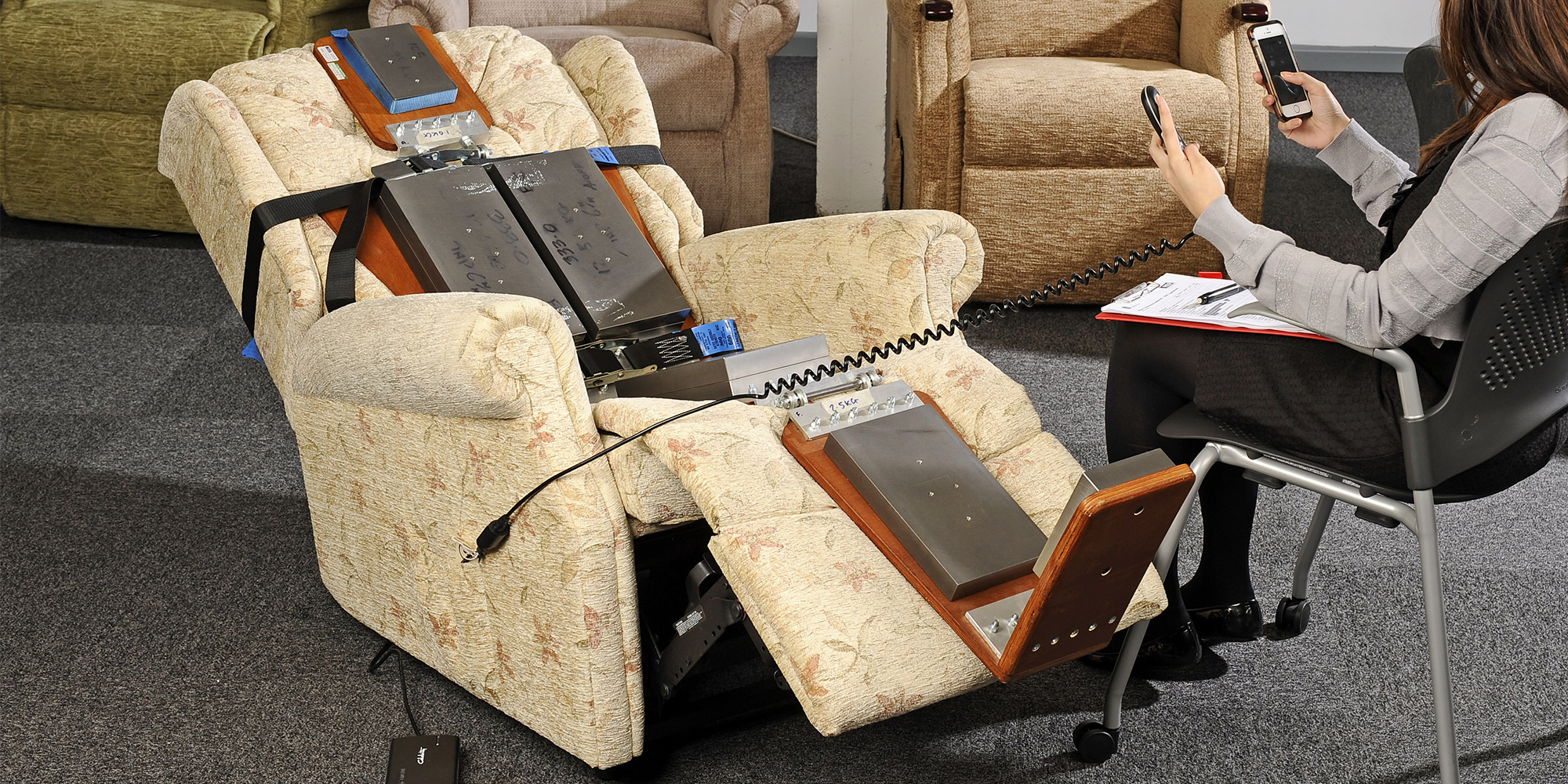BS EN 1022 Determination of Stability of Reclining and Adjustable Seating Testing
The BS EN 1022 standard provides a robust framework for determining the stability of reclining and adjustable seating products, ensuring that these items meet stringent safety and performance criteria. This service is vital for manufacturers looking to comply with regulatory requirements while also enhancing product quality and durability.
Stability testing is critical in this sector as it helps identify any potential risks associated with improper assembly or design flaws that could lead to accidents. The test method involves simulating real-world conditions under which the furniture might be used, ensuring that the seating remains stable even when subjected to various forces such as body weight and external loads.
For adjustable and reclining furniture, this stability is especially important because these products often incorporate complex mechanical components that can affect overall structural integrity. By adhering to BS EN 1022, manufacturers can ensure their designs are reliable and safe for end-users, thereby building trust with customers and maintaining a positive brand reputation.
The testing process typically begins by selecting appropriate specimens based on the intended use of the product. Specimens may include chairs, sofas, or any other piece of furniture equipped with adjustable features like recliners or lumbar supports. Once selected, these pieces are prepared according to specified dimensions and configurations outlined in the standard.
The next step involves setting up the test rigging, which includes mounting the specimen on a frame designed to replicate typical usage scenarios. During testing, various forces are applied to simulate static loads (such as sitting) and dynamic loads (like shifting positions). The goal is to observe how the furniture reacts under these conditions without losing structural integrity or exhibiting signs of instability.
Throughout the test duration, critical parameters such as displacement, angle change, and load distribution are continuously monitored using advanced instrumentation. This data helps assess the stability of the product and determine whether it meets all specified criteria defined by BS EN 1022. If any issues arise during testing, further analysis is conducted to identify root causes and implement corrective actions.
It's important to note that compliance with this standard goes beyond mere regulatory adherence; it also serves as a valuable quality assurance tool for manufacturers. By conducting thorough stability tests early in the development cycle, companies can catch potential problems before they become costly issues later on. Moreover, successful completion of these tests demonstrates commitment to safety and excellence, which is crucial when competing in today's competitive market.
To summarize, BS EN 1022 plays an essential role in ensuring that reclining and adjustable seating products are both safe and functional for consumers. Through rigorous testing methods aimed at replicating real-world usage scenarios, this standard helps manufacturers produce high-quality furniture that stands the test of time.
Applied Standards
| Standard | Description |
|---|---|
| BS EN 1022 | Determination of stability for reclining and adjustable seating furniture |
| ISO 9243:2006 | Furniture - Determination of load-bearing capacity |
| ASTM F1758-19 | Determination of load-bearing capacity for seating furniture |
| IEC 60328:2014 | Furniture - Determination of stability under dynamic conditions |
The BS EN 1022 standard is particularly relevant when assessing the stability of reclining and adjustable seating furniture. It provides specific guidelines for setting up test rigs, applying loads, measuring displacements, and interpreting results. Compliance with this standard ensures that manufacturers meet stringent safety requirements while also demonstrating a commitment to quality.
Quality and Reliability Assurance
- Conducting comprehensive pre-test inspections of specimens.
- Maintaining detailed records of test parameters and results.
- Performing post-test evaluations to identify areas for improvement.
- Implementing continuous monitoring programs during production runs.
- Regularly updating equipment and instrumentation to ensure accuracy.
Incorporating these quality assurance measures into your workflow helps guarantee consistent product performance across all batches. Regular reviews of test data allow you to make informed decisions about design changes or process improvements, ultimately leading to more reliable products that meet customer expectations.
Use Cases and Application Examples
| Application Example | Description |
|---|---|
| Manufacturing new recliner models | Testing ensures that newly designed recliners maintain their structural integrity throughout the expected lifespan of the product. |
| Upgrading existing adjustable seating lines | By incorporating updated stability criteria, manufacturers can enhance the safety and comfort levels offered by their products. |
| Retrofitting older models with new features | This process allows for evaluating how additional components interact with the overall structure of the furniture. |
| Addressing complaints from satisfied customers | Determining whether reported issues are due to manufacturing defects or normal wear and tear. |
These examples illustrate just some of the ways that compliance with BS EN 1022 can benefit manufacturers. Whether you're launching a new product line or refining an existing one, stability testing is crucial for maintaining high standards of quality and reliability.





